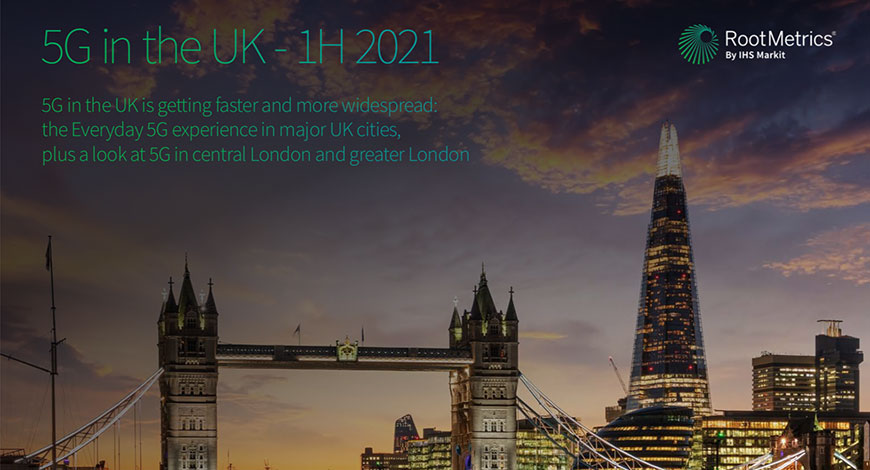5G
The state of 5G in the UK – 1H 2021

The importance of fast and reliable connectivity has reached an all-time high.
As 5G expands and people continue to rely on their mobiles more than ever before, demands for even better connectivity will only increase going forward.
The good news is that 5G is quickly becoming more widespread, speeds are getting faster, and we expect the end-user Everyday 5G experience to become even better going forward as the networks continue to mature and bolster their spectrum holdings.
-The foundation of an optimal 5G experience: availability plus performance (not one or the other)-
The end-user 5G experience is shaped by two main pillars: availability and performance.
Not only do you need to know how much 5G is available, you also need to understand the speed and data reliability performances you’re likely to experience when you access that 5G.
It’s critical that the two pillars of availability and performance be considered together—not in isolation—because the ideal 5G experience is marked by those times when an operator delivers a combination of both widespread Everyday 5G availability and strong performances for speed and reliability.
-Key takeaways-
EE the clear leader for availability, with excellent speeds:
EE was the only operator to record availability above 55% in any city, doing so in five, a jump from three last time. EE was also the only operator that didn’t record availability below 25% in a single city. Further, EE was one of two operators with speeds above 100 Mbps in all 16 cities tested, up from 12 last time, with speeds above 150 Mbps in two more cities than it did in 2H 2020.
Three users seeing better availability and speeds:
Three showed good improvement since 2H 2020. Three recorded availability above 40% in two more cities than it did in 2H 2020, while also registering availability below 10% in four fewer markets this time. While Three had the most cities with Everyday 5G median download speeds below 100 Mbps at 10, Three increased its number of cities with speeds above 100 Mbps from four in 2H 2020 to six this time.
Virgin Media O2 delivers impressive high-end speeds and better availability:
Virgin Media O2 clocked Everyday 5G median download speeds faster than 150 Mbps in six cities, a jump from two in 2H 2020, and a tally higher than those of EE (2), Three (0), or Vodafone (1). The operator also delivered speeds above 100 Mbps in all 16 cities, an increase from 9 last time. While Virgin Media O2’s Everyday 5G availability was low compared to that of the other operators in many cities, its progress was impressive: Virgin Media O2 recorded availability above 25% in eight cities in 1H 2021, a huge jump from zero last time.
Vodafone also shows availability and speed gains:
In 2H 2020, Vodafone registered Everyday 5G availability above 25% in just two cities, but that number moved to eight this time, with three of those cities above 40%. Vodafone also didn’t record availability below 10% in any city in 1H 2021, marking a strong improvement from five in 2H 2020. Moreover, Vodafone increased its number of cities with speeds of at least 100 Mbps from 8 in 2H 2020 to 12 this time.
-A look at the consistency of 5G availability and speed in the UK-
All operators show improvement since 2H 2020
Values represent the number of cities out of 16 that fell into each interval in 1H 2021. Values in parentheses reflect the number cities in each interval in 2H 2020 across the same 16 cities.
Values represent the number of cities out of 16 that fell into each interval in 1H 2021. Values in parentheses reflect the number cities in each interval in 2H 2020 across the same 16 cities.
-Conclusion and looking ahead-
The good news for users is that 5G in the UK is getting faster and more widespread.
While EE clearly leads the way when it comes to providing users with the key combination of broad Everyday 5G availability plus fast speeds, the other operators have continued to expand and improve.
Virgin Media O2 delivered particularly impressive speeds in 1H 2021—faster than those of EE in many cities—though availability for Virgin Media O2 and the other operators remained lower than that of EE in nearly every city we visited.
More good news is that the spectrum auction earlier this year could be a catalyst that leads to even better speeds for all four operators, along with more widespread availability.
While all four networks boosted their spectrum considerably at auction and should provide users with stronger performances going forward, Three is in a particularly interesting position as the operator with the most mid-band spectrum of any network at 140 MHz (compared to 90 MHz for Vodafone and 80 MHz each for EE and Virgin Media O2).
The addition of low-band spectrum at auction for EE, Three, and Virgin Media O2 also holds the potential to expand 5G to rural areas, helping fulfill the UK’s Shared Rural Network (SRN) goal to bring connectivity to 90% of the country.
The results found in central London were particularly impressive and encouraging for the rest of the UK.
If the broad Everyday 5G availability and outstanding speeds we found in central London expand to other cities and/or rural areas, we could witness a fundamental improvement to the end-user experience, as well as further growth of our connected communities.
CT Bureau















You must be logged in to post a comment Login